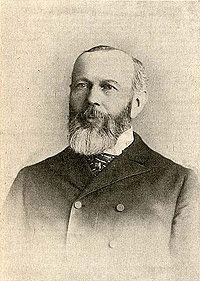Nationality Canadian Role Architect Died 1907 | Occupation Architect Name Henry Langley | |
 | ||
People also search for William George Storm | ||
Henry Langley (26 November 1836 – 1907) was a Canadian architect based in Toronto. He was active from 1854 to 1907. Among the first architects born and trained in Canada, he was a founding members of the Royal Canadian Academy of Arts in 1880 and was instrumental in establishing the Ontario Association of Architects in 1889. A conservative in architectural design, he is primarily known for designing numerous churches in the Toronto area, although he designed many secular buildings as well including residential, commercial and public buildings. Langley designed 70 churches throughout Ontario. He was the first chair of the Department of Architecture at the University of Toronto, where he taught during the 1880s and 1890s.
Contents
- Life and career
- Gundry Langley 1862 1869
- Langley 1869 1874
- Langley Langley Burke 1874 1884
- Langley Burke 1884 1894
- Langley Langley 1894 1907
- References
Life and career
Langley's parents, William Langley and Esther Anderson, emigrated to Canada from Ireland in 1832. Born in Toronto, Langley received his general education from the Toronto Academy where part of his training included studying the principles of drawing. In early 1854 he became apprenticed to Scottish architect William Hay, who was a specialist in gothic architecture. During his seven-year apprenticeship, he worked with Hay on some of the oldest buildings and structures in Toronto, including St. Basil's Church, Toronto (1855–1856), two of the original buildings at the University of St. Michael's College (1856), Yorkville Town Hall (1859-1860) and the Oaklands at De La Salle College (1860) among other structures.
After Hay's departure from Toronto in 1861, Langley was invited in 1862 by Hay's partner, Thomas Gundry, to become his new partner. He accepted and quickly became the firm's primary designer with Gundry shouldering most of the business side of the company. His most important project during these years was the Government House (1857–1859). In 1869 Gundry died, after which Langley spent the next four years working alone. However, he was assisted during those years by two talented apprentices who later became well known architects in Toronto: Frank Darling and his nephew Edmund Burke.
With the success of the firm, Langley brought in Burke and his brother, the builder Edward Langley, as partners in 1873. The company was in high demand and greatly increased its staff over the next several years. His brother left a decade later and Burke departed in 1894. His son, architect Charles Edward Langley, worked with him during the last 14 years of his life. Charles was the first person to graduate from the Department of Architecture at the University of Toronto on 3 May 1892.
Langley died in Toronto in 1907 and is interred at the Toronto Necropolis. He notably designed that cemetery's chapel.
Gundry & Langley (1862-1869)
Langley (1869-1874)
Langley, Langley & Burke (1874-1884)
Henry Langley, Edward Langley & Edmund Burke
Langley & Burke (1884-1894)
Henry Langley & Edmund Burke
Langley & Langley (1894-1907)
Henry Langley & Charles Edward Langley
